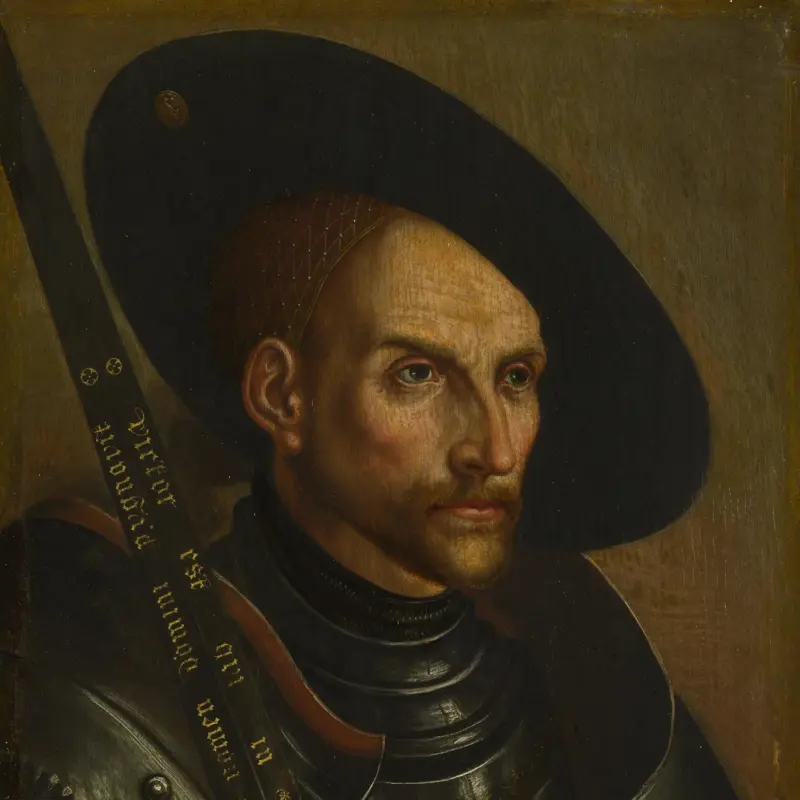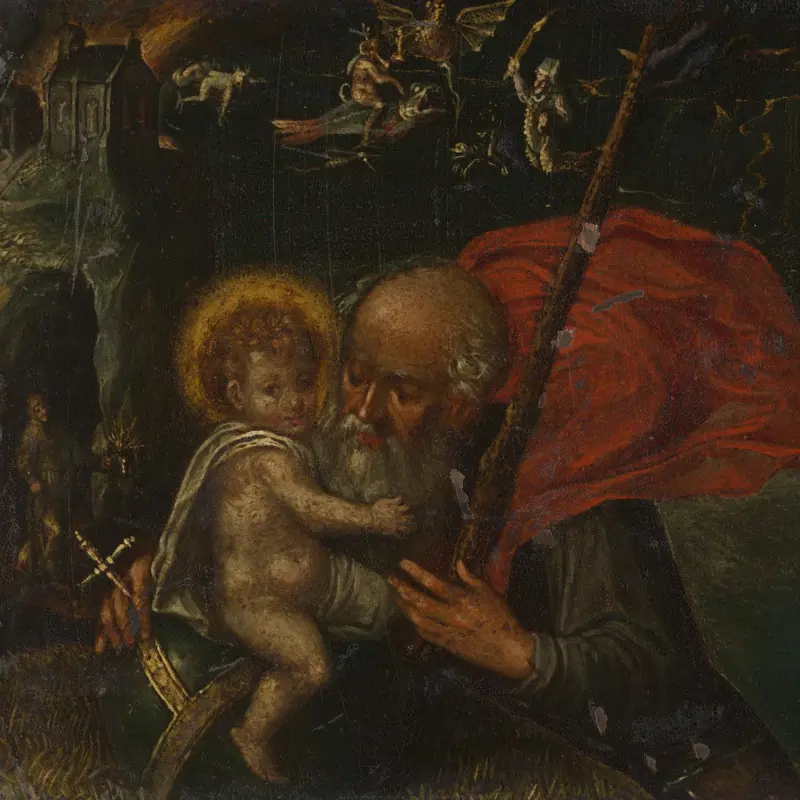German, 'A Rustic House by the Sea', 1843
About the work
Overview
The rustic and asymmetrical stone house is set high on a rocky hill overlooking a distant domed church and bell tower at right, perhaps a monastery, and the blue sea beyond. A cross hanging on the closed door at right and the two cloaked figures sketched in pencil huddled in front of it, suggest that this may be a charitable shelter, perhaps for pilgrims making their way to Rome.
Key facts
Details
- Full title
- A Rustic House by the Sea
- Artist
- German
- Date made
- 1843
- Medium and support
- Pencil and oil on paper laid on canvas
- Dimensions
- 21 × 28.5 cm
- Inscription summary
- Dated and inscribed
- Acquisition credit
- The Gere Collection, on long-term loan to the National Gallery
- Inventory number
- L793
- Location
- On loan: Gere Collection Paintings to the Ashmolean (2024 - 2026), The Ashmolean Museum of Art and Archaeology, Oxford, UK
- Image copyright
- The Gere Collection, on long-term loan to the National Gallery, © Private collection 2000. Used by permission
- Collection
- Main Collection
About this record
If you know more about this work or have spotted an error, please contact us. Please note that exhibition histories are listed from 2009 onwards. Bibliographies may not be complete; more comprehensive information is available in the National Gallery Library.


